(Note: This post is part of an occasional series on needlepoint. Earlier posts in the series can be found here and here.)
One of the artists whose paintings have inspired me most in my needlepoint adaptations has been Gene Charlton (1909-1979). Adapting Charlton’s paintings lets me combine two of my life passions: needlepoint and Houston art history. For me, that’s a combination that can’t be beat! Here are side-by-sides of his paintings and my interpretations so that you can see how close I came to the originals. You can also get an idea of the process I employ in this work.
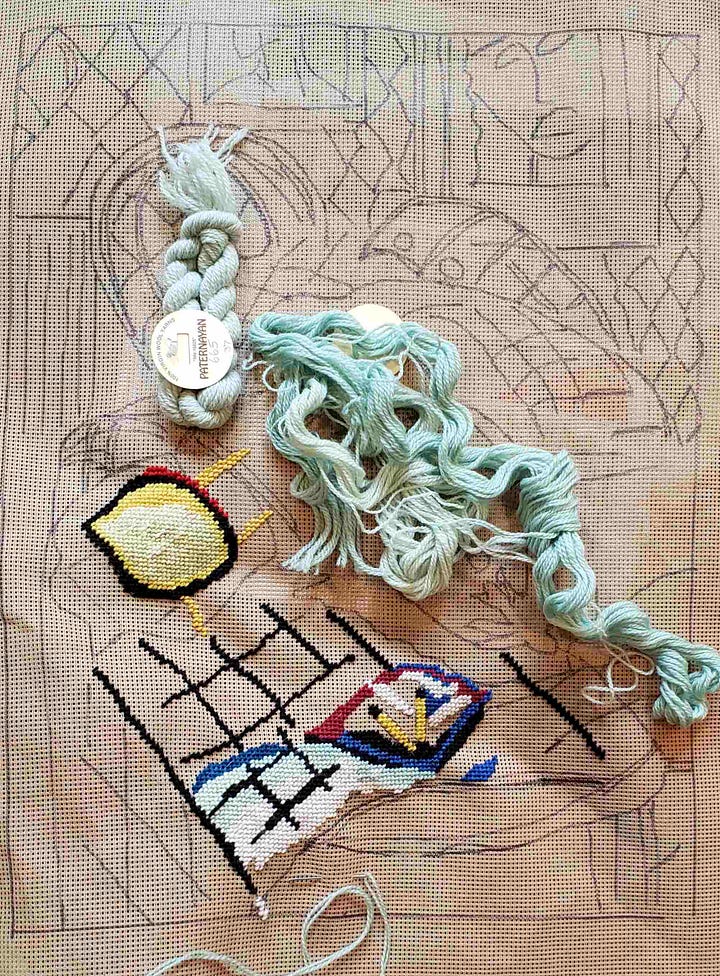
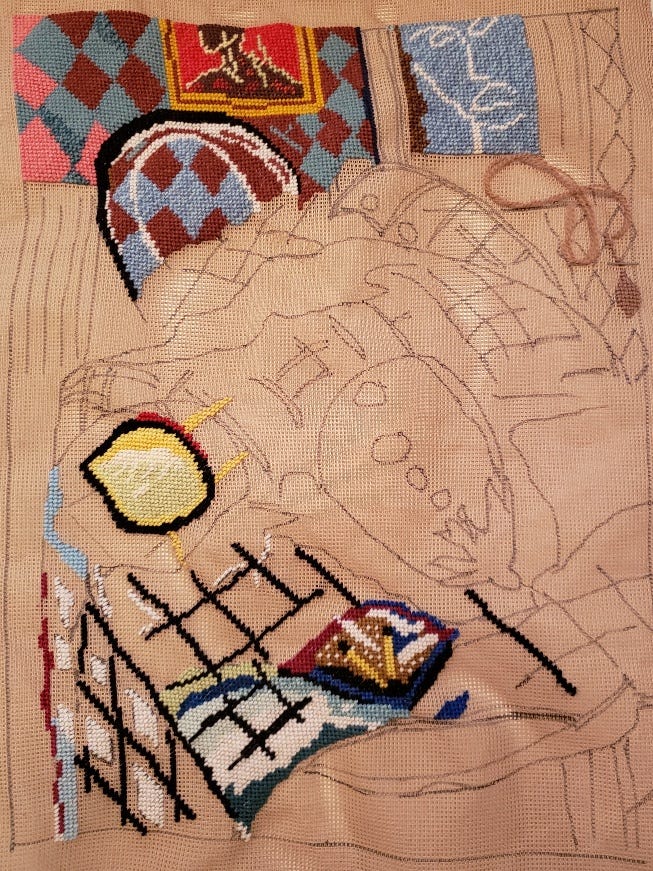
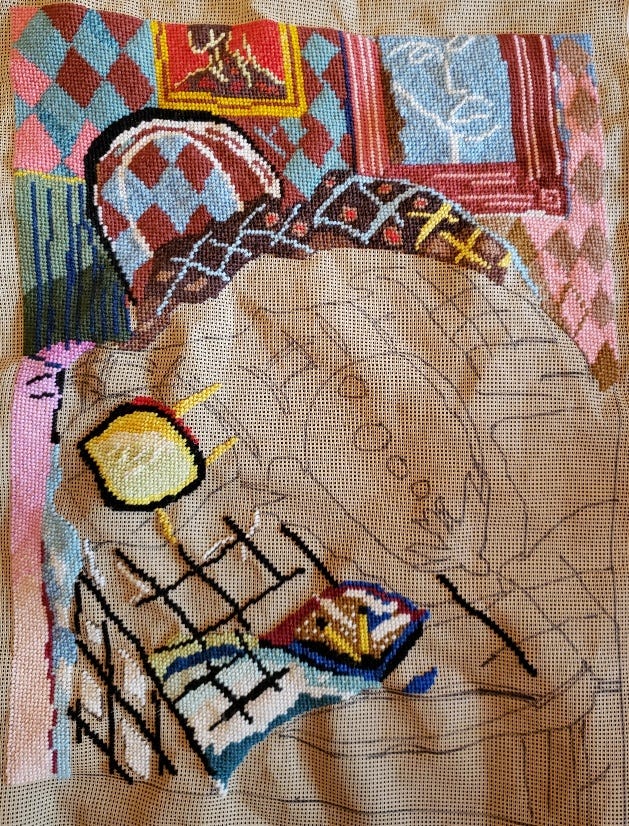

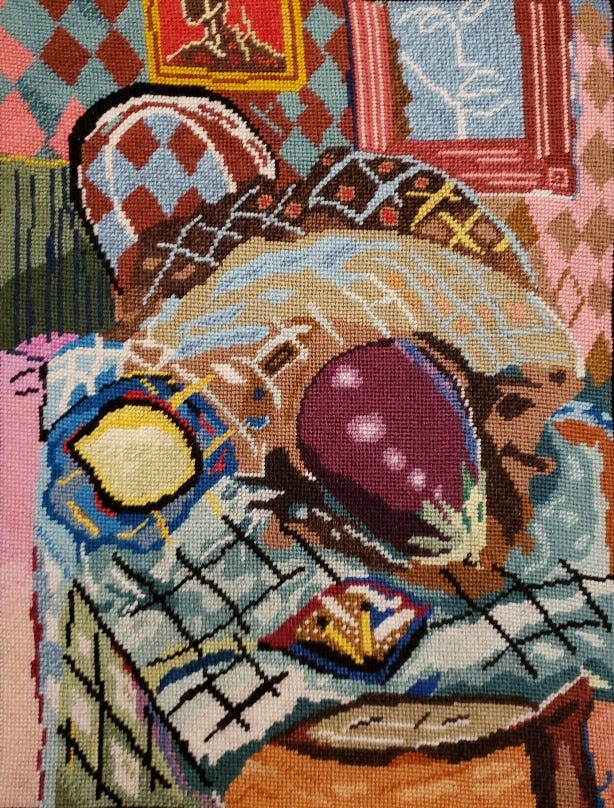
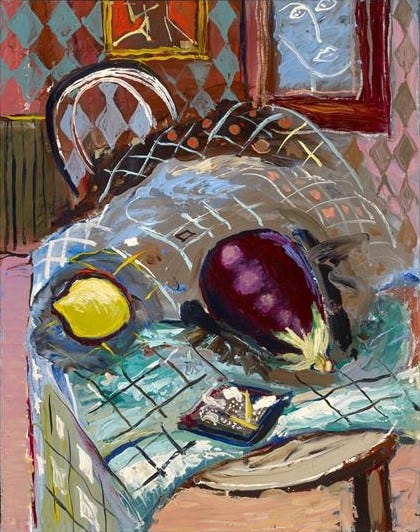
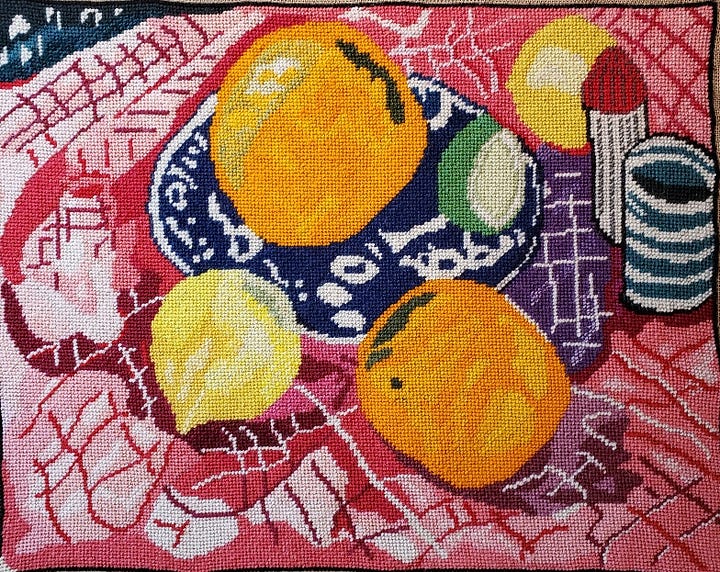
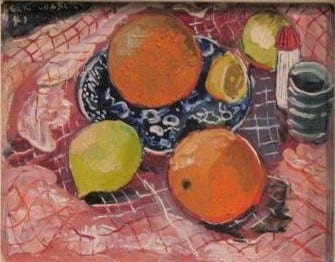
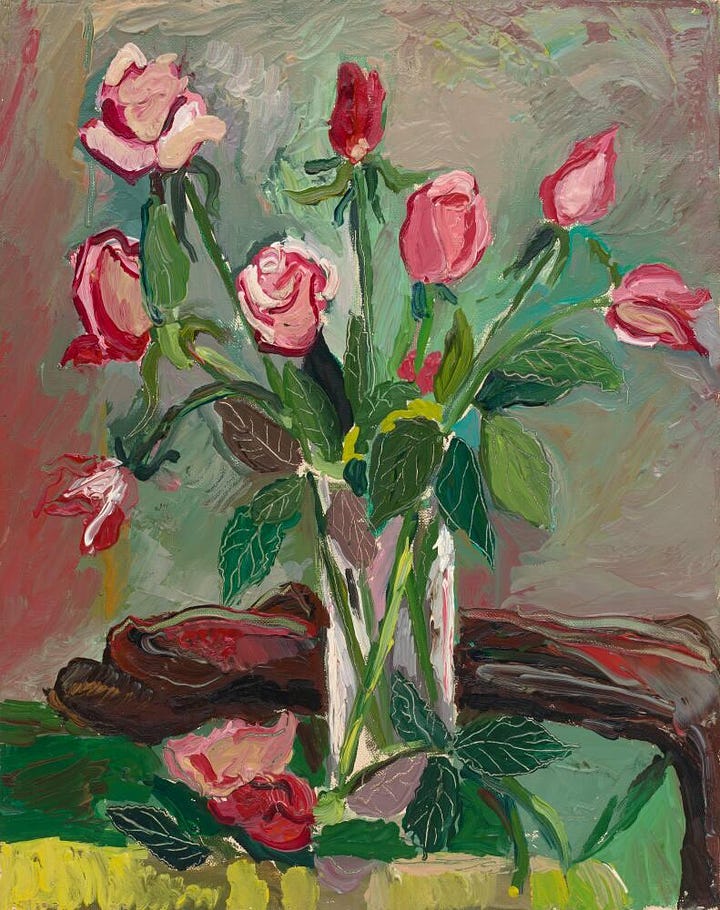
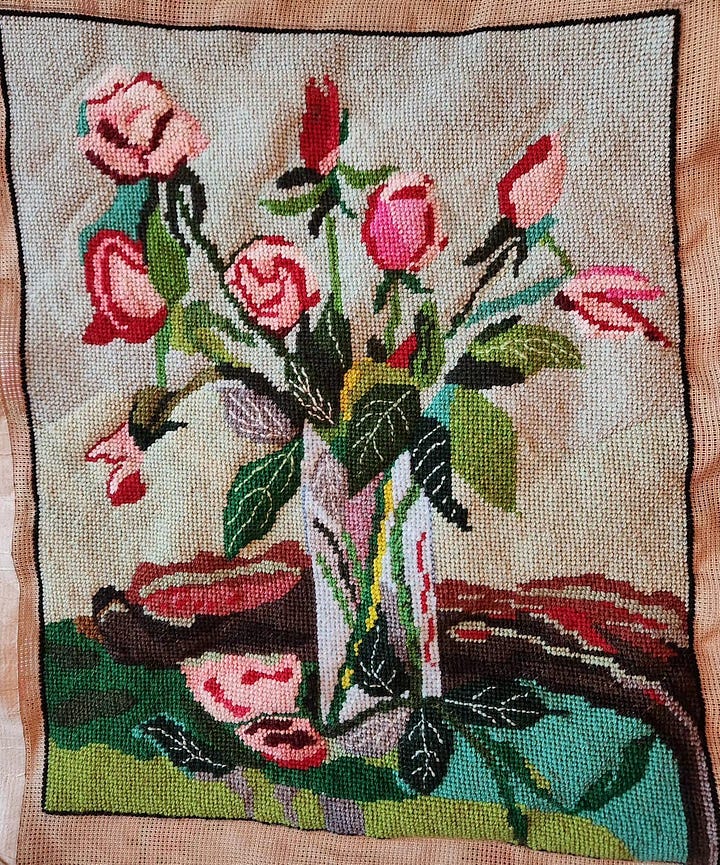
Though born in Cairo, Illinois, Charlton came to Houston in the early 1920s. By the 1930s he had become a leading young Turk of the Houston art and theater world. He exhibited often in group and one-man shows, and designed sets for ballet and theater, including some for the theater dynamo, Margo Jones. His paintings above, Roses, Oranges, and Eggplant, won the purchase prize in the Houston Annual Exhibition in 1942, and are part of the permanent collection of the Museum of Fine Arts, Houston. He is also represented in the Menil Collection and the Chicago Art Institute.
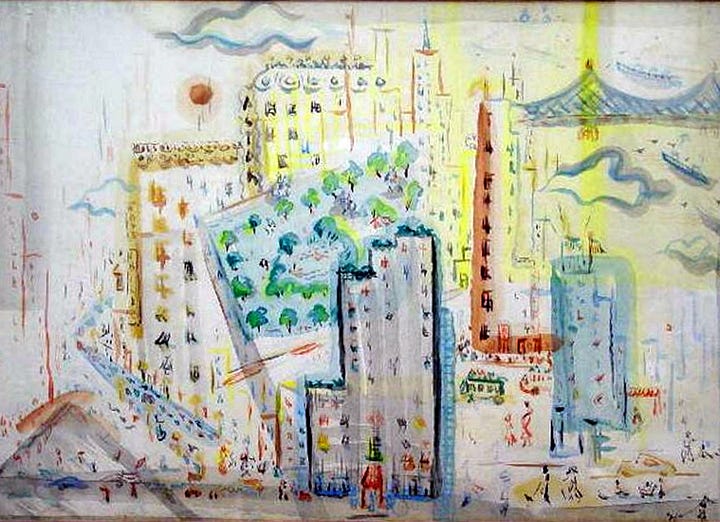
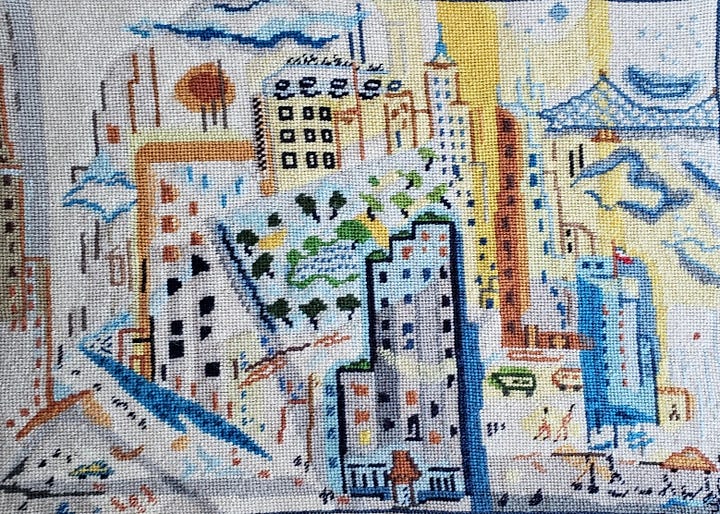
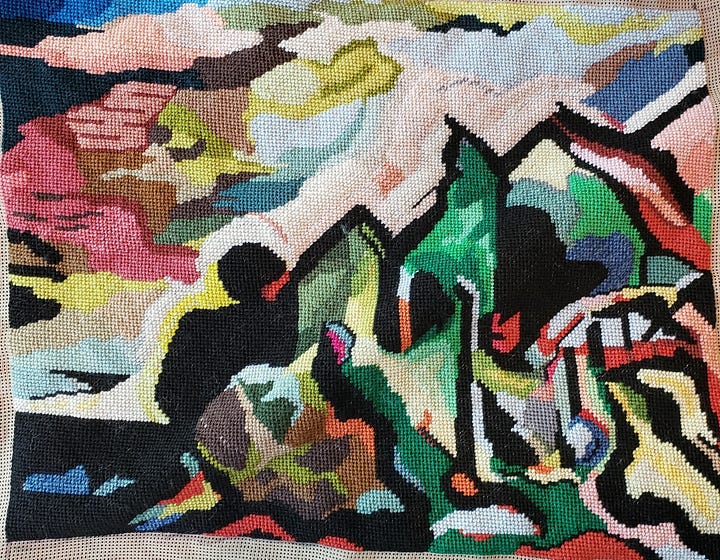
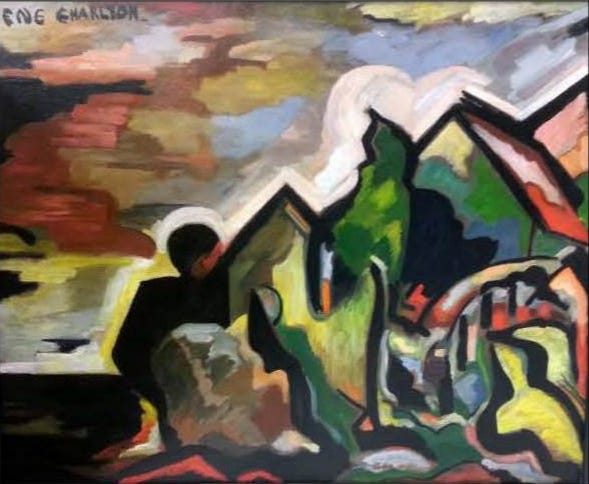
After World War II, during which he was stationed in England in the US Army, Charlton moved between Houston, New York City and Mexico. By the mid-1950s, he had moved to Madrid, and by the late 1950s, to Italy, where he spent the remainder of his life. He is buried in Positano, Italy. All of his paintings which I’ve turned into needlepoint pieces are from his time in Houston in the 1930s and early 1940s.
(You can find out more about Gene Charlton’s life and art here.)
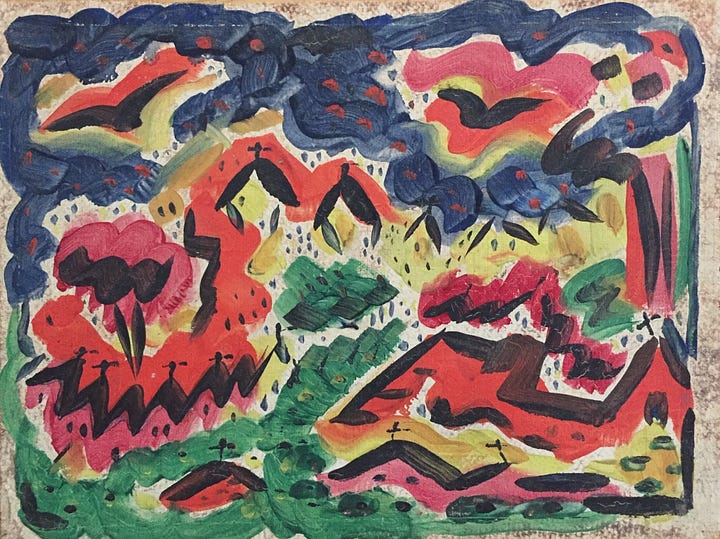
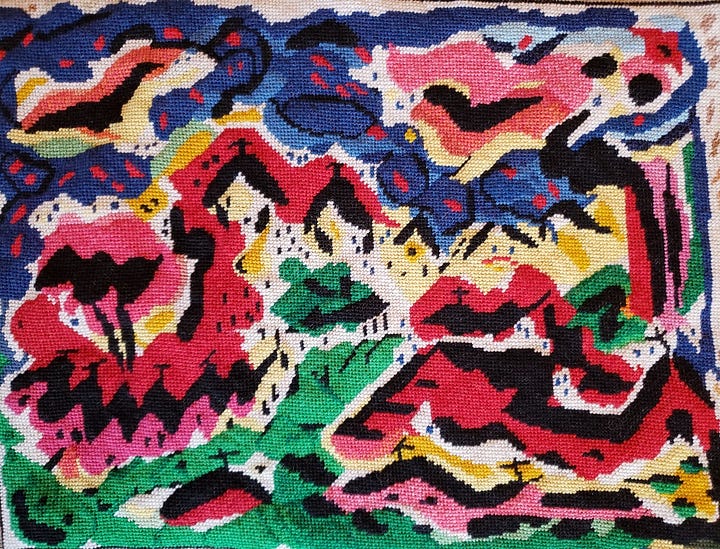
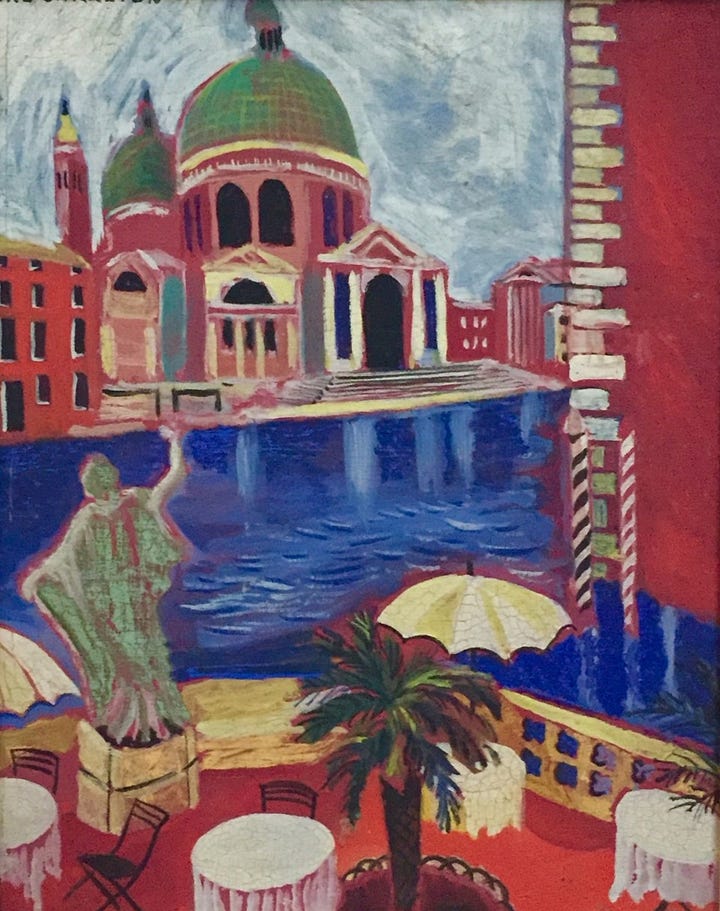
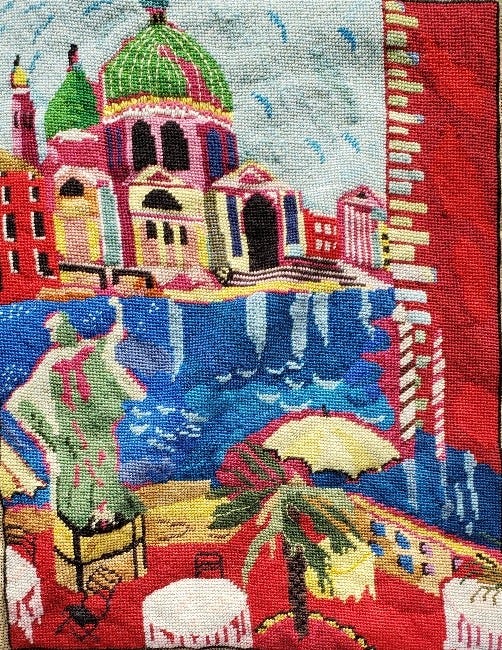
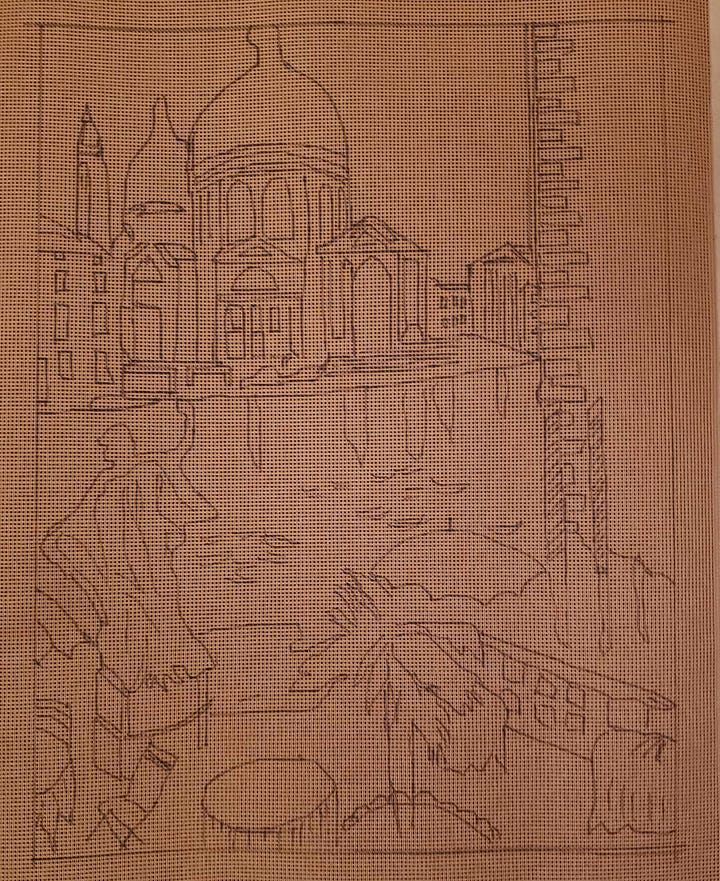
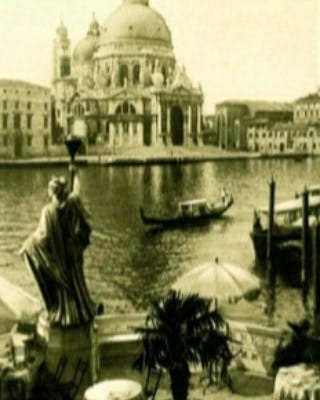
In making his original painting of Santa Maria della Salute, Charlton seems to have worked directly from a tourist postcard (above right) - one he perhaps bought while visiting Venice in 1937. You can see the statue in his painting both in the postcard photo, and in the advert below for the hotel whose terrace it graced, overlooking the canal and the magnificent church.




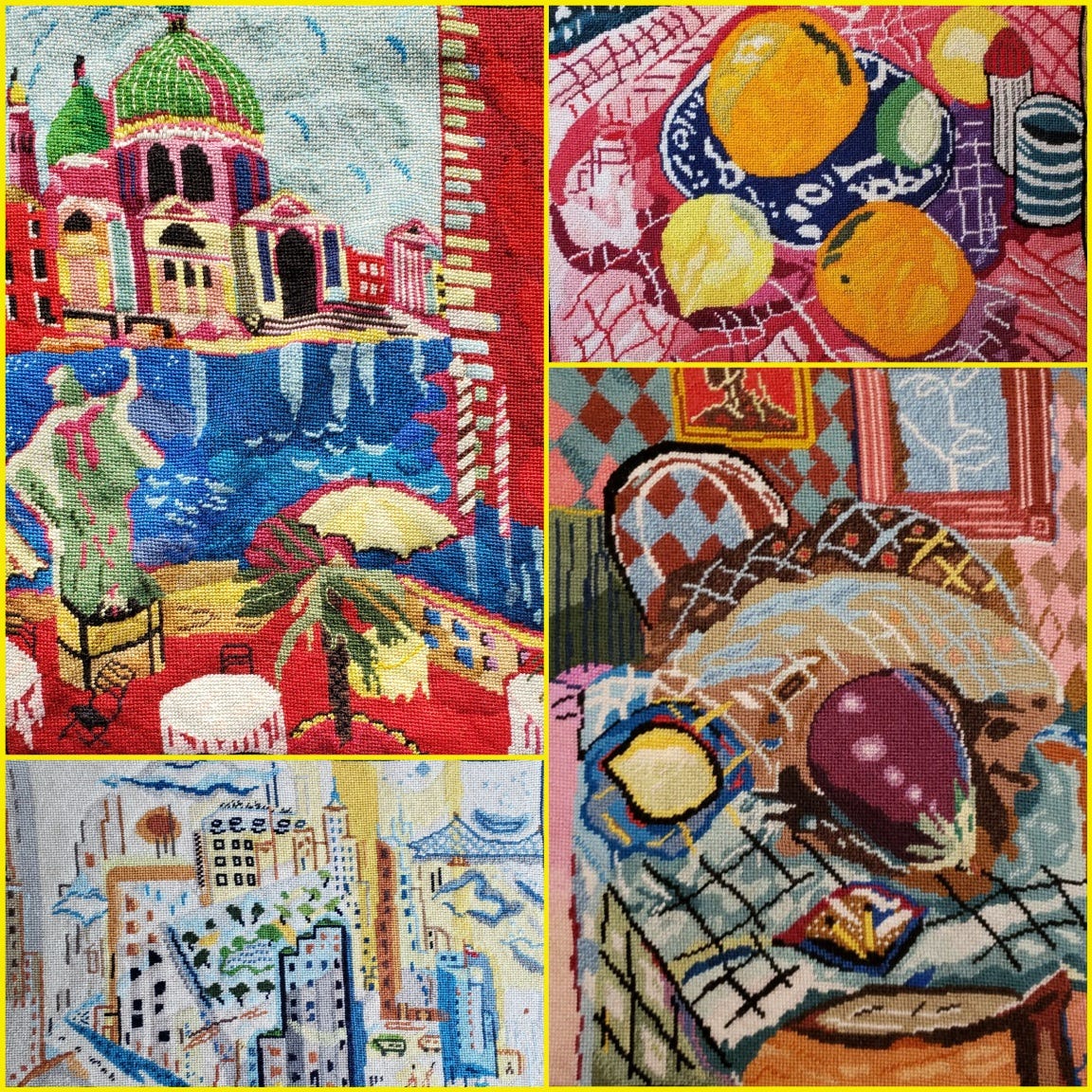
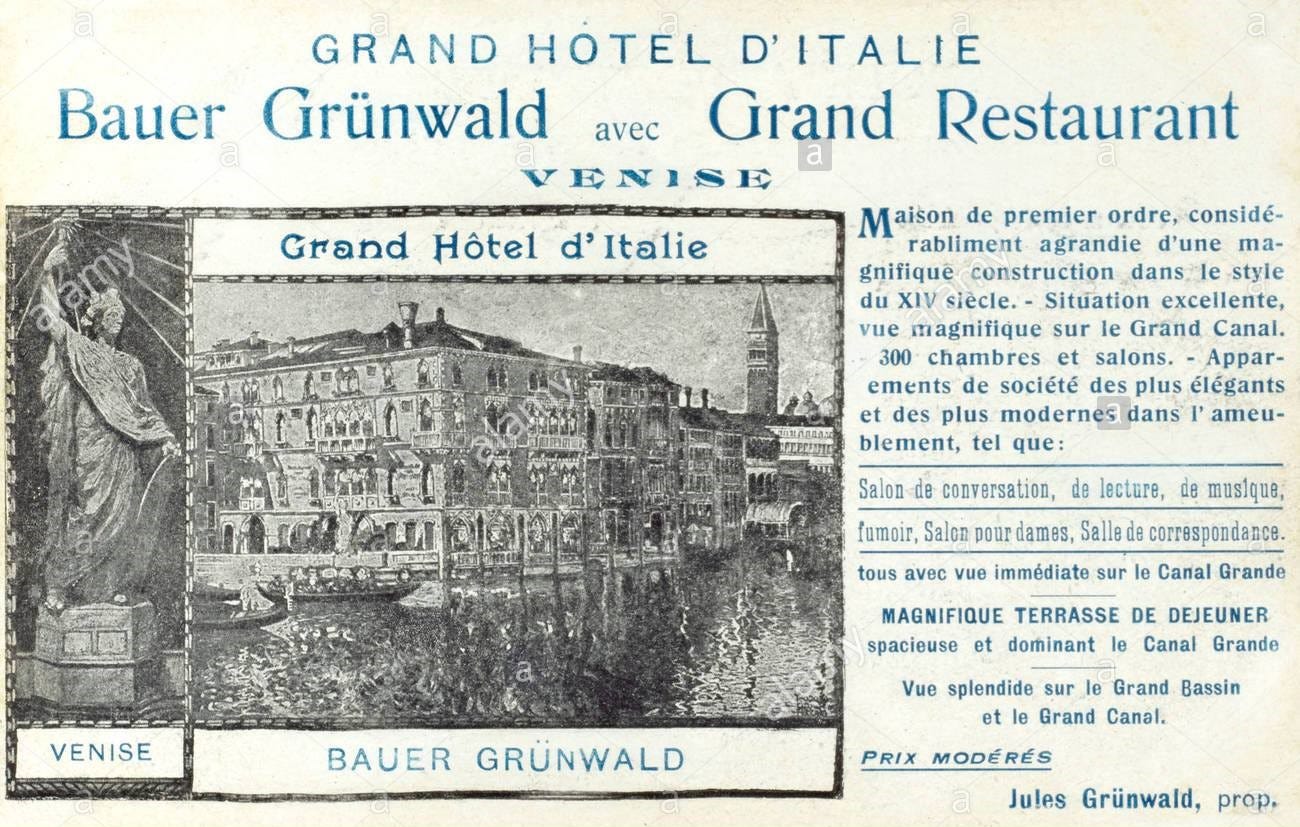
I love Charlton's works--and especially yours.